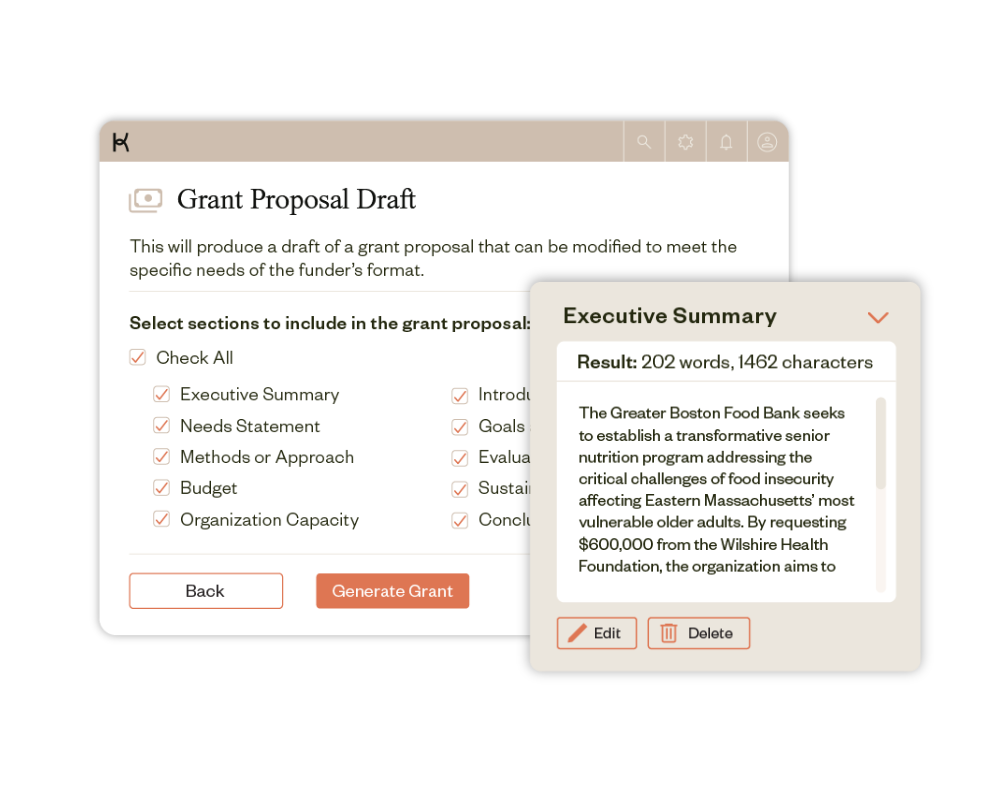
Maybe you’re thinking to yourself we’ve got our systems, and our data… but it feels like something’s missing. You’re wondering if you’re really using the system well. If that’s the case, you’re not alone because 90% of nonprofits collect data, but only 5% use that data to make decisions!
In this blog you’ll learn why data gets collected but not used, how the tech and team fit together to convert raw data into data driven decisions, and why fundraisers (and fundraising teams) struggle with the tech (yes there’s a very good reason!).
We’ll start by talking about how information systems are part human and part tech.
Humans are mini databases!
Humans are mini databases; we collect and store information in our brains and increased experience increases our personal information. We don’t talk about this very much, but when we use just ourselves as a database it’s called instinct. Instinct is an incredible feature of humans. And when humans gather and combine their instinct, it becomes even more powerful (ie. your Board of Directors!).
When organizations scale in size, they scale in complexity and our mini database minds can’t store data reliably by memory so we store data in external databases. And we create systems to collect, organize and report the data we’re storing. These systems are called Information Systems and they are part technology and part human. Too often, however, humans are a silent partner in information systems. So here’s a graph of an information system which shows the Tech Stack on one side and The Human Stack on the other side. And like chains, Information systems are only as strong as their weakest stack.
The Tech Stack
But, what’s a stack?
Glad you asked! A stack is a group of things that works together for a common purpose.
Techies coined the phrase “the tech stack”. They are referring to the group of technology tools that teams use. Most nonprofits have way more tools than people realize. If an organization had a single technology tool for each function of their fundraising, that could mean 30 different systems. So if it feels like you’re using a lot of tools, you are, and that’s the way that modern work happens. (And there are many more than this, these are just some of the common ones.)
The Human Stack
Just like the tech stack is a group of tools, The Human Stack is the community of humans (not tools) who work as a team to use a tech stack. Fundraising teams use a specific tech stack to manage relationships, track requests, and organize donations. The finance team uses a different tech stack in a different way to gather transactions, organize funds, and manage the books.
Information systems are only as good as their weakest stack. If the tech stack or The Human Stack aren’t pulling their weight, no matter how powerful the other stack is, the information system is blocked by the LEAST effective stack. The point isn’t to point fingers and blame stacks, the point is to grow the effectiveness of both the tech and the humans.
Collecting data isn’t enough, we need to use it!
Nonprofits are good at collecting data, but we’re bad at using it. For example, one study found that 90% of nonprofits collect data, but only 5% use that data to make decisions. In order to find a way forward, we need a theory of change to guide nonprofits a path forward (and preferably one that’s simple and memorable). Here’s the Theory Of Change we created at The Human Stack and it’s only 6 words!
We use the words data, information and insight interchangeably, but they are actually different.
- Data is the smallest unit of meaning.
- Information is data with meaning.
- Insight is actionable information.
Here’s a simple example: let’s say I’m wondering about making dinner plans. Data is knowing that today is November 14th. Information is remembering that November is my anniversary. Insight is deciding that I will make a reservation for dinner to celebrate our anniversary.
When the decisions are clear and can be made by a single individual, the differences between data, information and insight don’t really matter. But when it comes to working as a team, converting data to decision making, the differences matter quite a bit.
On Forecasts & Feelings
Let’s look at a more complex fundraising example of this: Fundraising Forecasts. Here are the basic steps to make a fundraising forecast.
- Step 1: Fundraising Staff make a best guess on the amount and timing for future donations (Data).
- Step 2: Fundraising Directors add the data to a forecast with quarterly estimates (Information).
- Step 3: Executives use quarterly estimates to make decisions (Insight).
If forecasts are so simple, why do they create so much tension for fundraising teams? It’s because forecasts blend digital behaviors with underlying beliefs and affect people’s sense of belonging.
Fundraising staff create donations for the upcoming year to create a forecast and these future donations have a lot of unknowns. They can make a best guess but will their performance be evaluated based on their ability to predict accurately? Should they keep the estimates low? What happens if they think it will be in Q1 and instead it’s in Q3? Do they trust the Fundraising Director enough to have a transparent and authentic conversation about it? Ultimately their feelings of trust and belonging are going to directly affect the quality of the forecast data that they create.
Fundraising Directors use the data from their team to create a forecast and break it down by quarters and give the executive team quarterly estimates. And fundraising directors have their own issues to confront. They are wondering how to balance accountability with authenticity for their staff, how to divide the work to ensure it’s done accurately, and how to present the forecast with enough confidence to stand by the work and create the expectation that some of the numbers will change. So the forecast can make Fundraising Directors feel caught in the middle.
Executives who use the quarterly estimates to make investment and resource decisions based on the insight provided by the estimates. When it comes to information systems, leaders truly eat last because Insight is the end of the supply chain of data and requires the participation of staff, directors, data, information, data quality, standard operating procedures, digital maturity, the list goes on. If the estimates are wildly inaccurate, the board will have questions for them.
How do we know if our fundraising system is healthy?
Fundraising intelligence is a two stack, multiple roles, many people, lots of data coordinated effort and when so many pieces are involved, how do you know if it’s working?
If your information systems are in bad shape, you’ll know it. Your team will be frustrated, your data won’t be accurate, and you won’t know answers to basic questions about fundraising. So if you’re not terribly frustrated, you generally trust the data, and so on, that’s a pretty good sign. (The one negative indicator that should be taken with a grain of salt is the phrase, “our CRM doesn’t work”. CRM’s are like websites, everyone is sure they need a new one so they let the current one go feral.)
Let’s say things aren’t that dire, that doesn’t necessarily mean they are good! So how do you improve and keep moving forward? When we diagnose digital health, we look at these 6 vitals. The three tech stack vitals are: Solution Fit, Data Quality, Utilization. The Human Stack vitals are: System Sustainability, Digital Strategy, and Accountability. If you grow these 6 areas of your digital systems, things are going to get better. And if you want to take a quick quiz to see how you stack up, you can find it here: www.thehumanstack.com/quiz.
A question, a word of advice, and a final thought.
A Question: How would things be different a year from now if you began viewing your Information Systems as a partnership between your technology and your staff?
A word of advice: The best way to grow your digital maturity is to get curious about your beliefs and feelings about your information systems? Why do you like some and dislike others? Why is it so easy to just put things in a spreadsheet instead of using the system? Like Ted Lasso says, “Be curious, not judgmental.”
And a final thought: The tech stack can be configured in weeks and months, but the Human Stack takes quarters and years to change. Plan accordingly.
Be the first to read our resources.
The world is changing quickly—and our resources help you stay on top of it all. Sign up to get new insights, success stories, and more, sent right to your inbox.




